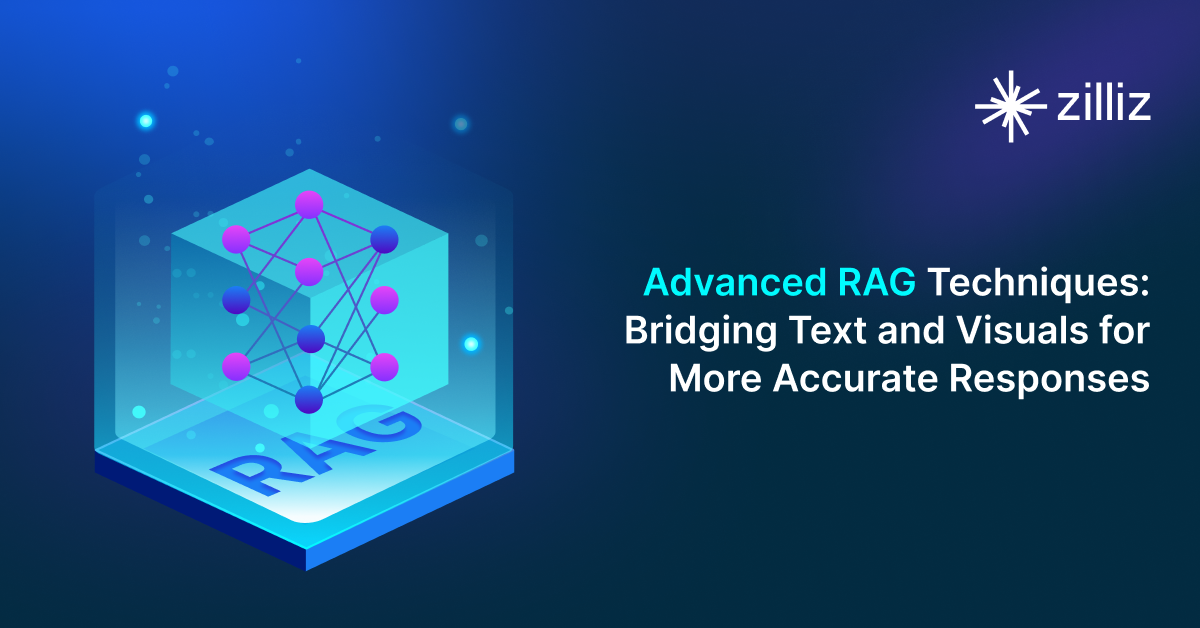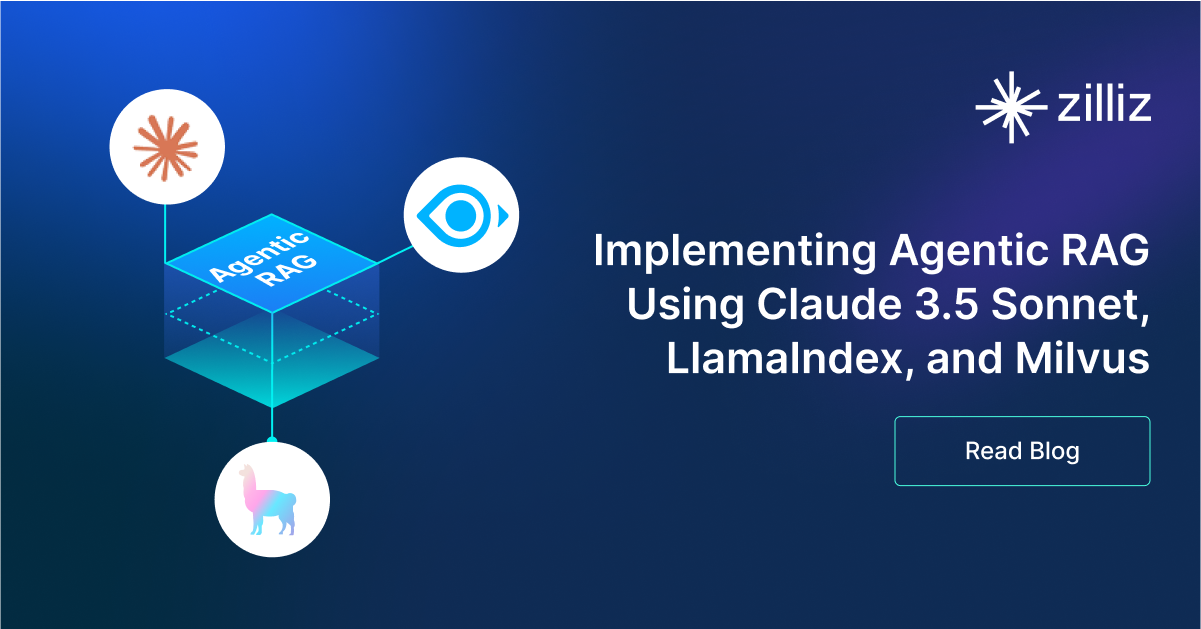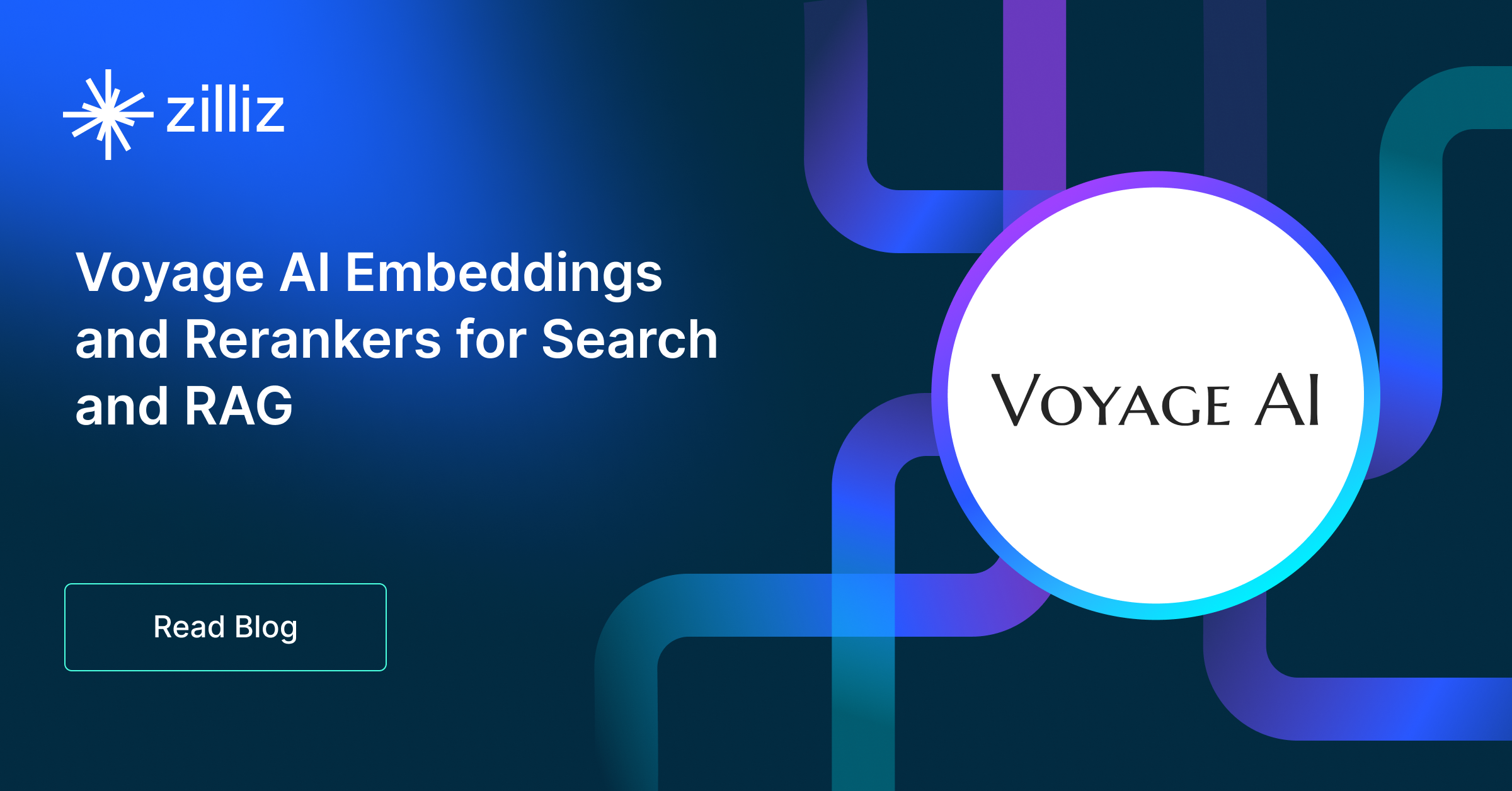Build RAG Chatbot with LangChain, Milvus, Mistral AI Mixtral 8x7B, and HuggingFace all-mpnet-base-v2
Introduction to RAG
Retrieval-Augmented Generation (RAG) is a game-changer for GenAI applications, especially in conversational AI. It combines the power of pre-trained large language models (LLMs) like OpenAI’s GPT with external knowledge sources stored in vector databases such as Milvus and Zilliz Cloud, allowing for more accurate, contextually relevant, and up-to-date response generation. A RAG pipeline usually consists of four basic components: a vector database, an embedding model, an LLM, and a framework.
Key Components We'll Use for This RAG Chatbot
This tutorial shows you how to build a simple RAG chatbot in Python using the following components:
- LangChain: An open-source framework that helps you orchestrate the interaction between LLMs, vector stores, embedding models, etc, making it easier to integrate a RAG pipeline.
- Milvus: An open-source vector database optimized to store, index, and search large-scale vector embeddings efficiently, perfect for use cases like RAG, semantic search, and recommender systems. If you hate to manage your own infrastructure, we recommend using Zilliz Cloud, which is a fully managed vector database service built on Milvus and offers a free tier supporting up to 1 million vectors.
- Mistral AI's Mixtral 8x7B: A cutting-edge, multi-model architecture designed to enhance performance and efficiency. It combines 8 smaller models, each with 7 billion parameters, allowing for more specialized capabilities and improved scalability. This innovative design aims to deliver faster, more accurate AI responses while maintaining resource efficiency.
- HuggingFace all-mpnet-base-v2: This model is a variant of MPNet designed for general-purpose NLP tasks, offering superior performance in sentence embeddings and semantic similarity. It excels in understanding contextual nuances, making it ideal for search, recommendation systems, and any application requiring robust textual comprehension and matching capabilities.
By the end of this tutorial, you’ll have a functional chatbot capable of answering questions based on a custom knowledge base.
Note: Since we may use proprietary models in our tutorials, make sure you have the required API key beforehand.
Step 1: Install and Set Up LangChain
%pip install --quiet --upgrade langchain-text-splitters langchain-community langgraph
Step 2: Install and Set Up Mistral AI Mixtral 8x7B
pip install -qU "langchain[mistralai]"
import getpass
import os
if not os.environ.get("MISTRAL_API_KEY"):
os.environ["MISTRAL_API_KEY"] = getpass.getpass("Enter API key for Mistral AI: ")
from langchain.chat_models import init_chat_model
llm = init_chat_model("open-mixtral-8x7b", model_provider="mistralai")
Step 3: Install and Set Up HuggingFace all-mpnet-base-v2
pip install -qU langchain-huggingface
from langchain_huggingface import HuggingFaceEmbeddings
embeddings = HuggingFaceEmbeddings(model_name="sentence-transformers/all-mpnet-base-v2")
Step 4: Install and Set Up Milvus
pip install -qU langchain-milvus
from langchain_milvus import Milvus
vector_store = Milvus(embedding_function=embeddings)
Step 5: Build a RAG Chatbot
Now that you’ve set up all components, let’s start to build a simple chatbot. We’ll use the Milvus introduction doc as a private knowledge base. You can replace it with your own dataset to customize your RAG chatbot.
import bs4
from langchain import hub
from langchain_community.document_loaders import WebBaseLoader
from langchain_core.documents import Document
from langchain_text_splitters import RecursiveCharacterTextSplitter
from langgraph.graph import START, StateGraph
from typing_extensions import List, TypedDict
# Load and chunk contents of the blog
loader = WebBaseLoader(
web_paths=("https://milvus.io/docs/overview.md",),
bs_kwargs=dict(
parse_only=bs4.SoupStrainer(
class_=("doc-style doc-post-content")
)
),
)
docs = loader.load()
text_splitter = RecursiveCharacterTextSplitter(chunk_size=1000, chunk_overlap=200)
all_splits = text_splitter.split_documents(docs)
# Index chunks
_ = vector_store.add_documents(documents=all_splits)
# Define prompt for question-answering
prompt = hub.pull("rlm/rag-prompt")
# Define state for application
class State(TypedDict):
question: str
context: List[Document]
answer: str
# Define application steps
def retrieve(state: State):
retrieved_docs = vector_store.similarity_search(state["question"])
return {"context": retrieved_docs}
def generate(state: State):
docs_content = "\n\n".join(doc.page_content for doc in state["context"])
messages = prompt.invoke({"question": state["question"], "context": docs_content})
response = llm.invoke(messages)
return {"answer": response.content}
# Compile application and test
graph_builder = StateGraph(State).add_sequence([retrieve, generate])
graph_builder.add_edge(START, "retrieve")
graph = graph_builder.compile()
Test the Chatbot
Yeah! You've built your own chatbot. Let's ask the chatbot a question.
response = graph.invoke({"question": "What data types does Milvus support?"})
print(response["answer"])
Example Output
Milvus supports various data types including sparse vectors, binary vectors, JSON, and arrays. Additionally, it handles common numerical and character types, making it versatile for different data modeling needs. This allows users to manage unstructured or multi-modal data efficiently.
Optimization Tips
As you build your RAG system, optimization is key to ensuring peak performance and efficiency. While setting up the components is an essential first step, fine-tuning each one will help you create a solution that works even better and scales seamlessly. In this section, we’ll share some practical tips for optimizing all these components, giving you the edge to build smarter, faster, and more responsive RAG applications.
LangChain optimization tips
To optimize LangChain, focus on minimizing redundant operations in your workflow by structuring your chains and agents efficiently. Use caching to avoid repeated computations, speeding up your system, and experiment with modular design to ensure that components like models or databases can be easily swapped out. This will provide both flexibility and efficiency, allowing you to quickly scale your system without unnecessary delays or complications.
Milvus optimization tips
Milvus serves as a highly efficient vector database, critical for retrieval tasks in a RAG system. To optimize its performance, ensure that indexes are properly built to balance speed and accuracy; consider utilizing HNSW (Hierarchical Navigable Small World) for efficient nearest neighbor search where response time is crucial. Partitioning data based on usage patterns can enhance query performance and reduce load times, enabling better scalability. Regularly monitor and adjust cache settings based on query frequency to avoid latency during data retrieval. Employ batch processing for vector insertions, which can minimize database lock contention and enhance overall throughput. Additionally, fine-tune the model parameters by experimenting with the dimensionality of the vectors; higher dimensions can improve retrieval accuracy but may increase search time, necessitating a balance tailored to your specific use case and hardware infrastructure.
Mistral AI Mixtral 8x7B optimization tips
Mixtral 8x7B is a mixture-of-experts (MoE) model, meaning only a subset of its parameters are used per query, optimizing efficiency while maintaining high performance. To maximize retrieval-augmented generation (RAG) efficiency, ensure retrieval pipelines return highly relevant context to avoid unnecessary token usage. Use adaptive chunking to provide structured and concise information, preventing retrieval of excessive or redundant data. Optimize inference speed by adjusting routing strategies, ensuring the right expert pathways are utilized efficiently. Fine-tune temperature (0.1–0.3 for factual tasks) and top-p settings to maintain response consistency. If running Mixtral in a self-hosted or API-based environment, leverage batching and parallel processing to handle high-throughput requests efficiently. When combining Mixtral with other models in a multi-tier system, use it selectively for reasoning-heavy queries while delegating simpler tasks to smaller models.
HuggingFace all-mpnet-base-v2 optimization tips
HuggingFace all-mpnet-base-v2 is a robust and efficient embedding model that excels in semantic understanding for RAG tasks. Optimize retrieval by reducing text noise before embedding, ensuring that only meaningful content is processed. Use approximate nearest neighbor (ANN) search with FAISS or a similar framework to accelerate query resolution without compromising quality. Implement dimensionality reduction techniques to save memory and reduce computational overhead. Leverage caching strategies for frequently queried text embeddings to minimize API calls and improve latency. Fine-tune the embedding model on task-specific data to improve accuracy and relevance in your search results. When scaling, use parallel processing for large datasets and batch embedding operations to optimize throughput.
By implementing these tips across your components, you'll be able to enhance the performance and functionality of your RAG system, ensuring it’s optimized for both speed and accuracy. Keep testing, iterating, and refining your setup to stay ahead in the ever-evolving world of AI development.
RAG Cost Calculator: A Free Tool to Calculate Your Cost in Seconds
Estimating the cost of a Retrieval-Augmented Generation (RAG) pipeline involves analyzing expenses across vector storage, compute resources, and API usage. Key cost drivers include vector database queries, embedding generation, and LLM inference.
RAG Cost Calculator is a free tool that quickly estimates the cost of building a RAG pipeline, including chunking, embedding, vector storage/search, and LLM generation. It also helps you identify cost-saving opportunities and achieve up to 10x cost reduction on vector databases with the serverless option.
 Calculate your RAG cost
Calculate your RAG cost
What Have You Learned?
What a journey this has been! Through this tutorial, you’ve taken a big leap into the world of cutting-edge technology by learning how to integrate LangChain, Milvus, Mistral AI's Mixtral 8x7B, and Hugging Face's all-mpnet-base-v2 to create a powerful Retrieval-Augmented Generation (RAG) system. Isn’t it thrilling to realize how each component plays a vital role in the system's overall performance?
You’ve seen firsthand how the framework serves as the backbone, seamlessly tying everything together to create a cohesive workflow. The vector database, Milvus, ensures you can search through vast datasets with impressive speed, making it easy to retrieve just the right information in an instant. And who could overlook the power of the Mistral AI model, which brings conversational intelligence to life, enabling rich interactions that feel human and engaging? Plus, using the embedding model from Hugging Face, you learned how to create deep semantic representations, enriching the context of your queries and responses.
Along the way, you discovered optimization tips and even a handy cost calculator, providing tools to streamline your development process further. With these skills, you’re more than ready to start building your own RAG applications. Don’t just stop here—embrace the challenge, innovate, and see where your creativity takes you! The future of intelligent systems is in your hands, so dive in and start creating!
Further Resources
🌟 In addition to this RAG tutorial, unleash your full potential with these incredible resources to level up your RAG skills.
- How to Build a Multimodal RAG | Documentation
- How to Enhance the Performance of Your RAG Pipeline
- Graph RAG with Milvus | Documentation
- How to Evaluate RAG Applications - Zilliz Learn
- Generative AI Resource Hub | Zilliz
We'd Love to Hear What You Think!
We’d love to hear your thoughts! 🌟 Leave your questions or comments below or join our vibrant Milvus Discord community to share your experiences, ask questions, or connect with thousands of AI enthusiasts. Your journey matters to us!
If you like this tutorial, show your support by giving our Milvus GitHub repo a star ⭐—it means the world to us and inspires us to keep creating! 💖
- Introduction to RAG
- Key Components We'll Use for This RAG Chatbot
- Step 1: Install and Set Up LangChain
- Step 2: Install and Set Up Mistral AI Mixtral 8x7B
- Step 3: Install and Set Up HuggingFace all-mpnet-base-v2
- Step 4: Install and Set Up Milvus
- Step 5: Build a RAG Chatbot
- Optimization Tips
- RAG Cost Calculator: A Free Tool to Calculate Your Cost in Seconds
- What Have You Learned?
- Further Resources
- We'd Love to Hear What You Think!
Content
Vector Database at Scale
Zilliz Cloud is a fully-managed vector database built for scale, perfect for your RAG apps.
Try Zilliz Cloud for Free


